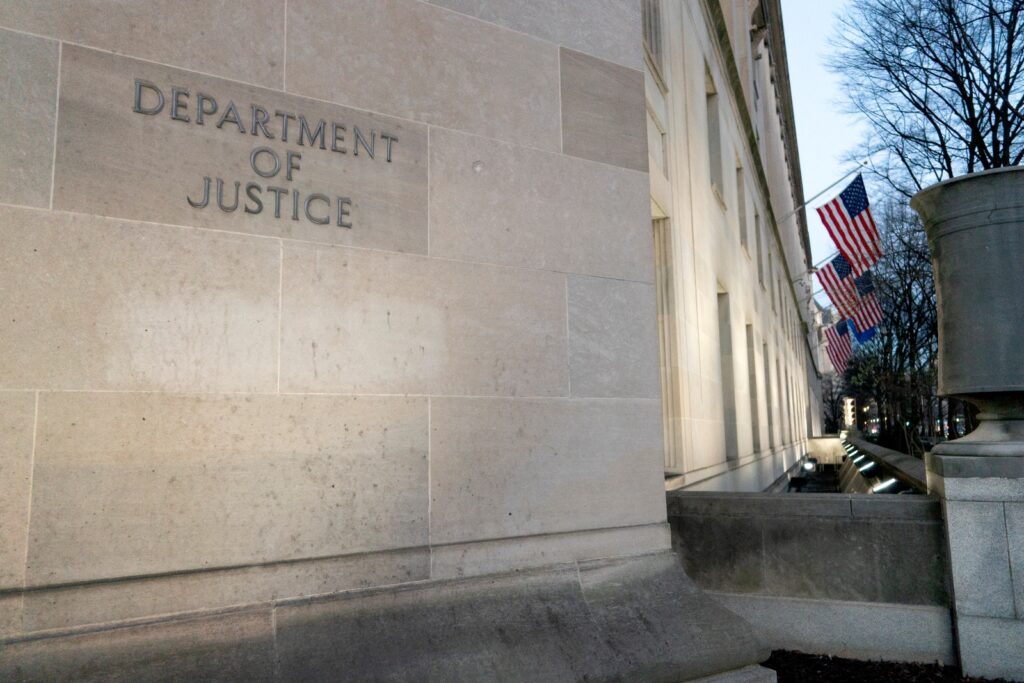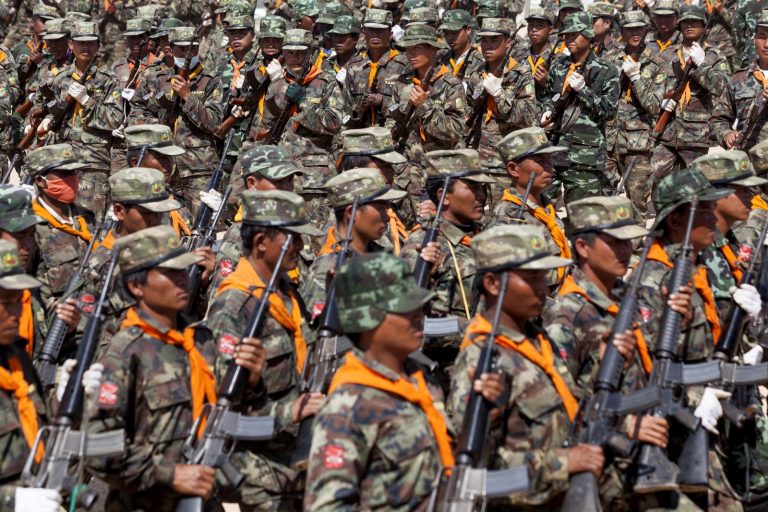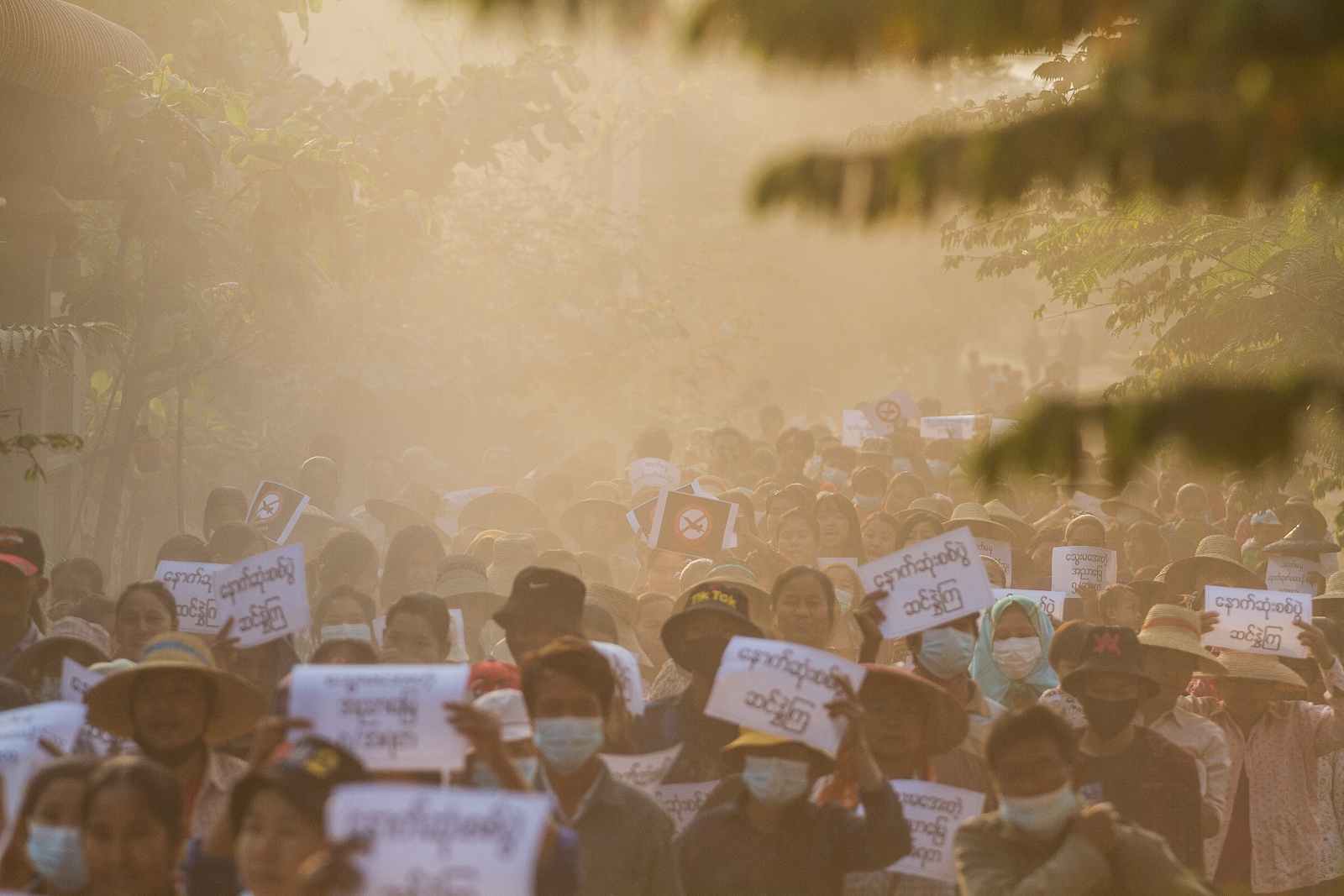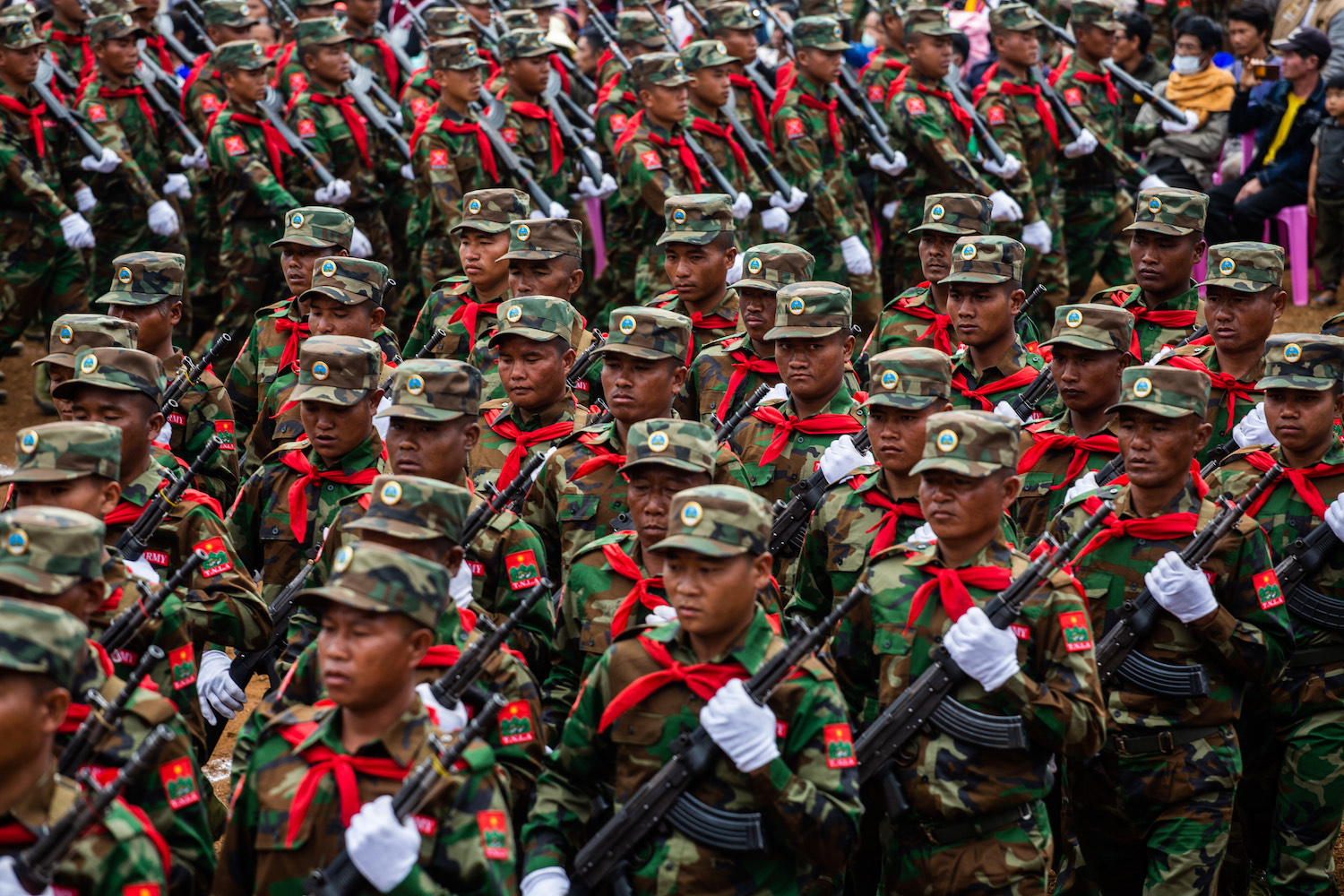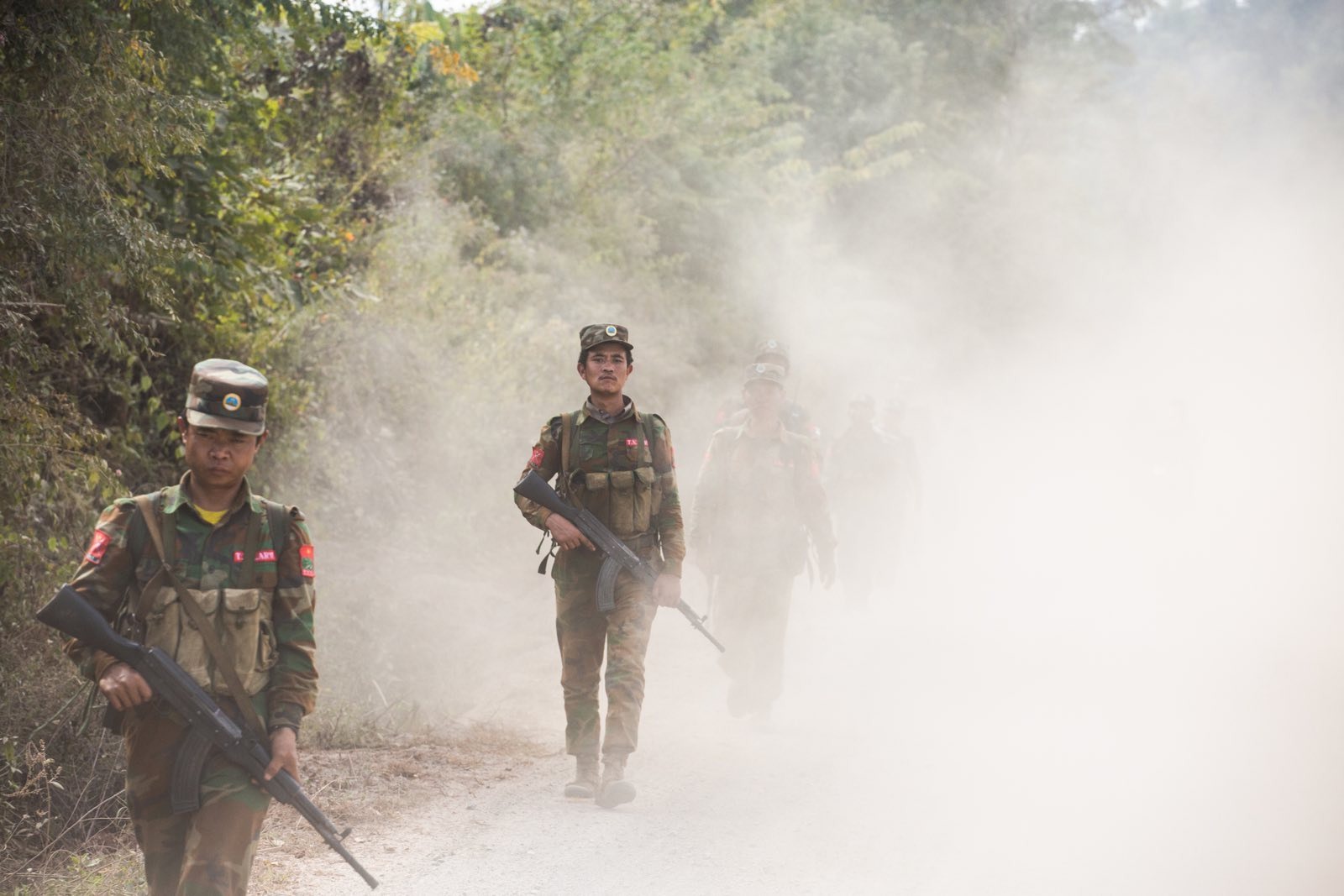The United States claimed it foiled a plot by an alleged Yakuza boss to sell weapons-grade plutonium sourced by an ethnic armed group in Myanmar, but experts say the story doesn’t add up.
By FRONTIER
When Dr Sharad Joshi first read about the case he almost couldn’t believe it was real.
“It seemed more like a screenplay than anything else,” said the professor who researches and teaches about nuclear issues and terrorism in Southeast Asia at the Middlebury Institute of International Studies in the United States.
“Everyone seems to be involved, you have the regime, you have insurgent groups, some of whom are aligned with the regime, and you have the Yakuza. I find it really puzzling. I would have dismissed the whole thing but then I saw the actual indictment document.”
That document, released by the US Department of Justice in February, accused a supposed leader of the infamous international Japanese crime syndicate the Yakuza of attempting to traffick “nuclear materials, including uranium and weapons-grade plutonium”.
The suspect, Takeshi Ebisawa, was said to have spent years trying to broker a deal between at least one ethnic armed organisation in Myanmar and a purported Iranian general. What he didn’t know at the time was that the interested buyer was actually an undercover agent working for the US Drug Enforcement Administration.
Only Ebisawa and one accomplice – Thai national Somphop Singhasiri – are actually named, but it takes little investigative legwork to make out one of the other suspects.
An earlier 2022 complaint identified one of the co-conspirators in the case, referred to as CC-1, as the chairman of the Restoration Council of Shan State, who until February 2014 also “led the Shan State Army”. While not named, there is only one individual who fits the bill: Yawd Serk.
The new indictment claims Ebisawa sought to trade “weapons grade nuclear material and lethal narcotics” in exchange for other weapons, including surface-to-air missiles, on behalf of CC-1.
The RCSS did not respond to any of Frontier’s requests for comment, but Yawd Serk previously denied the allegations, calling them an attempt to “discredit without any source”. He acknowledged being approached by a foreigner a few years ago asking to buy uranium minerals from Shan State, but told him that he “didn’t even know about uranium”.
Joshi called the allegations “far-fetched” and an expert on Japanese organised crime questioned the claims made about Ebisawa’s identity, arguing that it was unlikely he was a member – let alone a leader – of the Yakuza.
While Frontier’s reporting found there is uranium in Myanmar, including in RCSS territory, some of which has been subjected to renewed activity, the country seemingly doesn’t have the capacity to process it into the weapons-grade material Ebisawa was supposedly shopping around.

Uranium in Shan
The story is at least initially believable because geological surveys and independent research projects have confirmed a number of uranium deposits in Shan, some of which are controlled by the military, others seemingly by the RCSS.
The military-controlled Pinpet project, less than 15 kilometres southeast of the state capital Taunggyi, is the most infamous of the purported Shan uranium deposits. While the site is listed as a steel mill, there is also believed to be uranium present. The junta, however, has denied that the site is involved in “producing ammunition and stockpiling radioactive materials”.
The project began in 2004 as a partnership between the military conglomerate Myanmar Economic Corporation and Russian construction company Tyazhpromexport, a subsidiary of the state-owned Rostec defence conglomerate.
Ko Jone*, an explorative geologist with more than 20 years of experience, said that when he used to visit the Pinpet area before the 2021 military coup, he saw “lots of foreigners around the mine”.
“There were Russians, North Koreans and Chinese who would come to Pinpet to do research. There wouldn’t be so much foreign interest if the mine didn’t have a high concentration of uranium,” he said.
But the amount of uranium at Pinpet has been subject to debate. The last comprehensive study, carried out in the 1980s, only confirmed very small quantities, but Ko Jone said more recent research suggests a higher concentration.
Mr Emmanuel Chinkaka, a PhD Candidate in Geography and Spatial Sciences at the University of Delaware, explained that a higher concentration of uranium in a mineral “makes the ore surface area bigger” so the uranium is “easier to extract.”
“If you have higher concentrations in larger volumes, say 70 percent of the rock, it will be easier to recover a good percentage of [uranium] compared to having only a 20pc concentrate,” said Chinkaka, who has studied rare-earth element mining in Myanmar.
Who exactly is operating the mine is also unclear, but all roads point to the military. In 2014, reports surfaced that the mine had been handed over to the Ministry of Industry, controlled by the military since the coup. However, Ko Jone said that rare-earth exploration and mining in Myanmar has long been overseen directly by the military through a specialised unit known as the Science and Technology Department.
“Geologists have been blocked from mines that are believed to have uranium since the 1960s. Even representatives from the Department of Mines cannot go freely, they need permission from the military,” he explained.
Residents who live near Pinpet told Frontier that the mine has always been very heavily guarded. “They control who goes in and out. Even the monks are not allowed to enter the factory or mine area when they seek merit or for religious ceremonies. They have to wait outside so they don’t see anything,” said resident U Aung Zaw*.
Deemed unprofitable, the steel plant was closed in 2017 – the same year that the Myanmar Investment Commission added the “feasibility study and production of radioactive materials such as uranium and thorium” to its list of restricted activities, blocking foreign investment and allowing only the state to carry out such activities.
But following the coup, the junta announced plans to restart the project and in November last year Myanmar Now reported that the mine was preparing to reopen. However, residents told Frontier that they have yet to see any steel being produced.
“There are lots of cars, many carrying charcoal, that are going to the factory so we know that there’s work going on, but I haven’t seen any steel being produced,” said resident Daw Aye Aye Moe*, who has at times done daily wage manual labour for the project.
Ko Jone estimated that there are more than 100 mines in southern Shan, where the RCSS mainly operates, and between 30 to 50 of them could have a high concentration of uranium.
U Khin Zaw, a Myanmar geologist and professor at the University of Tasmania in Australia, has been researching one area that he believes could have “uranium potential”. Located in Mongkaing Township, the area has been rumoured to have uranium since the 1950s but limited exploration has been conducted.
“In that area, there is a similar kind of sedimentary origin of uranium to what they found in Canada and Australia,” said Khin Zaw, referring to two countries that host some of the world’s largest uranium ore deposits.
Ko Jone said the area is known to have metals like lead and antimony that are related to uranium and indicate that the sediment could be high in the radioactive material, but this has yet to be confirmed.
The deposits are located within territory historically controlled by the RCSS, which signed a ceasefire with rival group the Shan State Progress Party in November last year. Since then, residents say troops from both groups have been seen in the village and surrounding areas, but the RCSS still seems to control access to the areas where uranium is suspected to be present.
There are also rare-earth elements present at mines in Mong Hsu Township, where the SSPP and Myanmar military are both present. While the area is known primarily for its gemstones, Ko Jone said that “the uranium percentage in the metals at Mong Hsu is high”. However, geological exploration has been largely restricted by the military and public information is therefore limited.

Nay Pyi Taw October 2, 2021. (Office of the Commander-in-Chief of the Defence Services)
Going nuclear
But identifying uranium mines, including those in or near RCSS territory, is only one part of the puzzle outlined in the recent US indictment. Questions remain unanswered as to how the group could have processed raw uranium into weapons-grade nuclear material.
According to the indictment, one of the other five co-conspirators – described only vaguely as an associate of Ebisawa – met with the undercover DEA agent in February 2022 and presented him with two small plastic containers containing yellow powder. He claimed that one container held Triuranium octoxide (U3O8), a uranium compound also known as yellowcake, and the other held Thorium-232.
The associate told the undercover DEA agent that CC-1 – presumably Yawd Serk – had available “more than 2,000 kilograms of Thorium-232 and more than 100 kilograms of uranium in the compound U3O8″ and could produce as much as five tonnes of nuclear materials in his territory inside Myanmar.
With the help of Thai law enforcement, the samples of U3O8 and Thorium-232 made their way to a US laboratory, which supposedly confirmed that there were “detectable quantities of uranium, thorium and plutonium”, the latter of which was “weapons-grade”.
“The plutonium, if produced in sufficient quantities, would be suitable for use in a nuclear weapon,” the indictment claimed.
While U3O8 is not typically found in nature in its pure form, it can be extracted from other minerals such as pitchblende and carnotite and processed into yellowcake with relative ease through a combination of crushing and grinding. Thorium-232 is similarly found in other sources, such as monazite, granite and phosphate.
“You can understand yellowcake as an intermediate step in the process,” explained Chinkaka, the PhD candidate at the University of Delaware.
“It’s the most stable form [of uranium]. They’re going to ship the yellowcake because it’s in a state that has been refined a little bit but they can keep using it. Towards the end, they will keep processing it into different types of end-products,” he said.
But neither uranium or thorium naturally contain weapons-grade plutonium. To produce U3O8 or Thorium-232 of this kind, both would need to undergo a complex and expensive process of enrichment and irradiation, involving a nuclear reactor, “which Myanmar really does not have,” said Joshi, the nuclear issues professor. “It makes absolutely no sense.”
The indictment does not specify how the tests to determine the content of the samples were conducted and the US Attorney’s Office for the Southern District of New York did not respond to Frontier’s request for comment.
While there were claims back in the early 2010s that Myanmar was developing a nuclear reactor with help from Russia and North Korea, these rumours were debunked.
Ms Andrea Stricker, the deputy director of the Nonproliferation and Biodefense Program at the Washington DC-based think tank Foundation for the Defence of Democracies, thinks it’s unlikely that Myanmar’s nuclear capabilities have advanced much since then.
“It would be a pretty slim chance that Myanmar would have uranium enrichment capabilities or plutonium processing facilities,” said Stricker, who helped to discredit many of the myths around Myanmar’s nuclear capabilities in 2010 and 2011. “If it was enriched uranium then Myanmar would have to have a centrifuge plant as well as facilities to process mined uranium and converted uranium. For plutonium they would have to have a reactor and plutonium reprocessing facilities.”
She said it would be particularly difficult to pull that off without detection – because much of the equipment would have to come from Western suppliers.
“It would be a pretty big intelligence failure if they had secret facilities of that nature.”
*indicates the use of a pseudonym for security reasons


